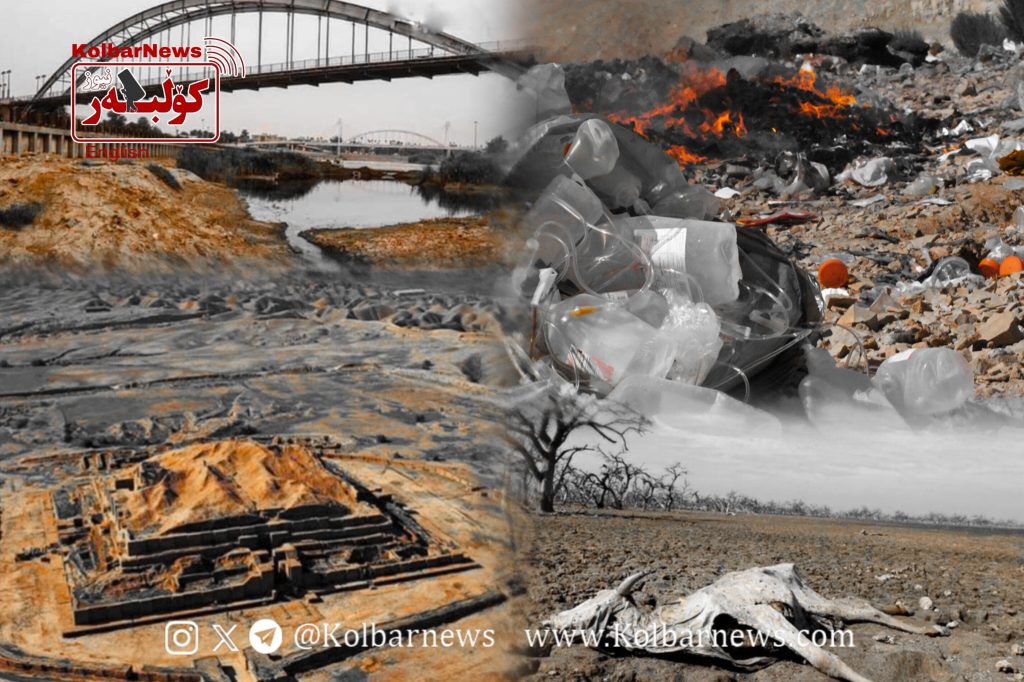Iran is grappling with severe environmental and agricultural crises, including land subsidence, drought, waste mismanagement, and pollution. These issues pose a significant threat to both natural resources and the livelihoods of millions.

This report, based on findings from Herana News Agency and other sources, summarizes the most pressing concerns and official responses.
Land Subsidence and Agricultural Threats:
Zanjan Province;
The region is facing land subsidence due to climate change, irregular rainfall, and drought. Officials warn that without immediate intervention, the crisis will worsen, affecting both infrastructure and agriculture.
Historical Sites at Risk;
According to Ali Beitollahi, head of the Seismology and Risk Assessment Division, 27 UNESCO-listed historical sites in Iran are under threat from land subsidence. These include Persepolis (Fars Province), Naqsh-e Jahan Square and Iranian gardens: Soltaniyeh Dome (Zanjan), Several qanats, Historic areas of Yazd
Qom is one of the worst-affected provinces. Major plains such as Jafariyeh, Mesileh, and the Qom-Kashan border areas are experiencing dangerous subsidence levels.
The average subsidence rate is 28 cm per year, nearly ten times the global average of 3 cm. 13% of Qom’s total area is at severe risk.
Kerman and Rafsanjan have the highest levels of land subsidence.
Khorasan Razavi has the largest affected area.
Isfahan faces the most severe urban impact, making it the most at-risk province.
The subsidence rate in Isfahan varies between 4 to 18 cm per year. Entire province affected due to prolonged droughts. Urban areas are significantly impacted, unlike other provinces. 200 schools have been affected, with 42 schools evacuated due to structural risks. Government-approved projects for water crisis and land subsidence remain unfulfilled.
Environmental Pollution and Waste Crisis. A recent video was published shows that (toxic liquid waste) contaminating the Telar River in Qaemshahr, Mazandaran.
These pollutants contain hazardous chemical compounds, posing serious risks to public health and local ecosystems.
Hospital Waste Crisis; The head of Shahid Beheshti Medical University highlighted that Iran produces 27% more hospital waste than global standards. Poor management of medical waste is a growing environmental concern. The governor of Ramsar described waste management in Mazandaran’s towns and villages as critical.
Experts warn that in 10-20 years, Mazandaran may become uninhabitable.
Sanctions have worsened the crisis by limiting access to modern waste treatment technologies. The closure of waste disposal sites has forced officials to transport waste to other provinces, raising further concerns.
Sewage Pollution in Khuzestan; The governor of Khuzestan revealed that 20 sewage outlets discharge directly into the Karun River. Authorities demand urgent action to end the pollution of one of Iran’s most vital rivers.
Dangerous Waste Site in West Azerbaijan; Salah Satoudeh, a representative of Mahabad in Parliament, criticized plans to build a shared waste disposal site for Mahabad and Miandoab.
The project threatens farmland, six villages, and could trigger forced migration.
Iran is facing a multi-layered environmental crisis, with land subsidence, waste mismanagement, and pollution worsening daily. The lack of effective policy implementation and international sanctions have further intensified these challenges. Without urgent action, historical landmarks, agriculture, and entire communities are at risk of devastation.

